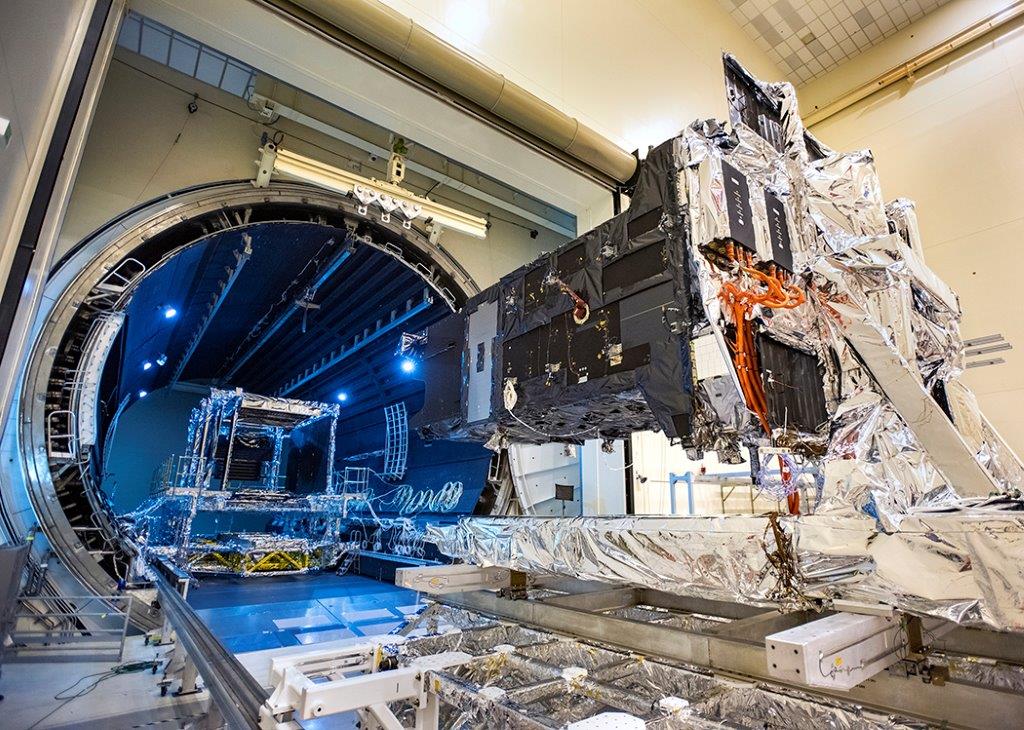Watch an Atlas V rocket launch US Space Force missile-warning satellite today
Update for Tuesday, May 18, 1:30 pm ET: United Launch Alliance will attempt to launch the SBIRS Geo Flight 5 missile warning site for the U.S. Space Force today, May 18 at 1:37 p.m. EDT (1737 GMT) after a Monday launch attempt was delayed.
This story was updated at 12:20 p.m. EDT.
CAPE CANAVERAL, Fla. — United Launch Alliance (ULA) will launch an Atlas V rocket into space today (May 17), and you can watch the action live online.
The two-stage rocket will blast off from Space Launch Complex 41 here at Cape Canaveral Space Force Station in Florida at 1:42 p.m. EDT (1742 GMT), carrying with it a missile-warning satellite for the U.S. Space Force. The launch was initially aimed to launch 7 minutes earlier, but ULA pushed it back "to avoid launching too close to object already in space," company officials said in an update on Twitter.
You can watch the launch live here and on the Space.com homepage, courtesy of ULA, beginning about 15 minutes before liftoff. You'll also be able to watch the launch directly from ULA.
Related: The most dangerous space weapons ever
Designated Space Based Infrared System Geosynchronous Earth Orbit Flight 5 (SBIRS Geo-5), the mission marks ULA's first launch so far this year. However, the company has a busy summer planned, including the launch of Boeing's Starliner crew capsule to the International Space Station.
Breaking space news, the latest updates on rocket launches, skywatching events and more!
That mission, called OFT-2, will be the spacecraft's second uncrewed orbital flight test. The first, which occurred in Dec. 2019, failed to reach the space station due to a software issue. Following a successful second flight test, Boeing will launch its first crew of astronauts later this year.
Related: Declassified US spy satellite photos & designs (gallery)
Weather forecasters predict a 90% chance of favorable conditions for SBIRS Geo-5's liftoff on Monday afternoon, with the only cause for concern being cumulus clouds.
Military officials have said that the satellite, built by Lockheed Martin for $1 billion, can detect and track hot plumes from missile launches around the world using infrared sensors. Its capabilities will enable U.S. and allied forces to prepare for any impending attacks, officials said.
"SBIRS data informs many of our country's defense systems, which together form a massive protective missile kill chain to defend our nation and our armed forces," Col. Erin Gulden of the U.S. Space Force said during a prelaunch briefing.
The two-stage Atlas V rolled out to the pad from its nearby integration facility on Saturday (May 15). Once in place, crews began to prep the rocket for its flight.
Related: Pentagon picks SpaceX, ULA to launch national security missions
Atlas V is fueled by a mix of liquid oxygen and RP-1, a refined form of kerosene used for spaceflight, and liquid hydrogen in its upper stage, which was loaded into the rocket Saturday afternoon. The vehicle will fly in the "421" configuration, with two solid rocket motors, a 13.12-foot (4 meters) diameter payload fairing. A single RL-10 engine, made by Aerojet Rocketdyne, will power Atlas V's Centaur upper stage.
Today's flight will be the eighth time overall that an Atlas V has flown in the 421 configuration, and the first mission to use the newly upgraded RL-10 engine. It's also the 87th overall flight of an Atlas V since its debut in 2002.
The rocket's strap-on rocket motors were also supplied by Aerojet Rocketdyne, and this flight marks the final military mission to use these particular boosters. Future missions will switch to GEM 63 boosters manufactured by Northrop Grumman.
Each of the 66-foot-long (20 m) GEM 63 rocket motors pack an extra 373,800 pounds of thrust. According to ULA, the GEM 63s are easier to handle and cost less than previous iterations.
All of the planned flights of Vulcan Centaur, ULA's next-generation launcher scheduled to debut late this year, will also use the GEM 63 strap-on boosters to help launch its missions. However, only the Aerojet boosters have been certified for crewed flights, so the upcoming Starliner missions will rely on their extra punch to get to orbit.
Editor's note: This story was updated to include a new launch time for the ULA Atlas V rocket's SBIRS GEO Flight 5 launch.
Follow Amy Thompson on Twitter @astrogingersnap. Follow us on Twitter @Spacedotcom or Facebook.

Amy Thompson is a Florida-based space and science journalist, who joined Space.com as a contributing writer in 2015. She's passionate about all things space and is a huge science and science-fiction geek. Star Wars is her favorite fandom, with that sassy little droid, R2D2 being her favorite. She studied science at the University of Florida, earning a degree in microbiology. Her work has also been published in Newsweek, VICE, Smithsonian, and many more. Now she chases rockets, writing about launches, commercial space, space station science, and everything in between.


